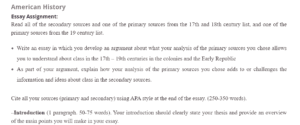Class in the 17th-19th Centuries
Class in American and European history has been a topic of significant conflicts and infatuations among historians. Encounters with new populations in the United States and Africa during the 17th to the 19th centuries captured European naturalists’ interests, who came up with different theories on the categorization of people into classes. The ground for human classification was that one group was distinctively and exclusively worse or better than the other. Also, the classification’s premise was that the white European elite were the most superior people on the planet. As seen in the 17th to the 19th centuries across Britain and America, the classification of humans based on race was and has been inextricable from class questions.
The 17th and 18th centuries in Britain and America saw some of the most significant changes in human beings’ classification based on their race. For instance, in 1601, England’s poor laws were passed. The parliament codified into law English welfare practices, which were characterized by local control whereby some select residents were selected to oversee the poor. The approach was later used in the United States to inform social welfare practice. The 17th and 18th centuries also saw the first sale of human beings based on race, as Africans were sold to white colonists. During this period, puritan beliefs stigmatized people in poverty (“4. Colonial society | The American yawp,” n.d.). Puritans believed that poverty was a sign of a fallout with God and that those people were doomed to suffer. The beliefs also shaped colonial America’s approach to social welfare.
Although the 19th century seemed promising, with industrialization and immigration that transformed the nation, class distinction was still rampant. The South and North were no longer at war, and the East and West were connected by railroads. Most of the land was occupied by colonial settlers. The country transformed quickly into an industrial giant but, in the process, created a new class structure with wealthy industrialists at the top and workers at the bottom. As the number of immigrants grew, especially the Chinese, policies were put in place to minimize their entry to America (“Chinese Immigrants in Gold Rush Era California,” n.d.). Prevention of immigration is still an ongoing process in the United States and is based on the individuals’ race (Anbinder, 2017). Nevertheless, class differences were at the core of society in the 17th to the 19th centuries.
References
Colonial society | The American yawp. (n.d.). The American Yawp. https://www.americanyawp.com/text/04-colonial-society/
Anbinder, T. (2017, February 7). Today’s banned immigrants are no different from our immigrant ancestors | Perspectives on history | AHA. AHA. https://www.historians.org/publications-and-directories/perspectives-on-history/february-2017/todays-banned-immigrants-are-no-different-from-our-immigrant-ancestors
Chinese Immigrants in Gold Rush Era California. (n.d.). UH – Digital History. https://www.digitalhistory.uh.edu/disp_textbook.cfm?smtID=3&psid=1193#:~:text=Digital%20History&text=Annotation%3A%20The%20Gold%20Rush%20brought,by%201876%2C%20there%20were%20116%2C000.&text=In%201852%2C%20California’s%20governor%2C%20John,proposed%20restricting%20immigration%20from%20China
ORDER A PLAGIARISM-FREE PAPER HERE
We’ll write everything from scratch
Question 
American History
Essay Assignment:
Read all of the secondary sources and one of the primary sources from the 17th and 18th century list, and one of the primary sources from the 19 century list.

Class in the 17th-19th Centuries
- Write an essay in which you develop an argument about what your analysis of the primary sources you chose allows you to understand about class in the 17th – 19th centuries in the colonies and the Early Republic
- As part of your argument, explain how your analysis of the primary sources you chose adds to or challenges the information and ideas about class in the secondary sources.
Cite all your sources (primary and secondary) using APA style at the end of the essay. (250-350 words).
–Introduction (1 paragraph. 50-75 words). Your introduction should clearly state your thesis and provide an overview of the main points you will make in your essay.
Underline or highlight your thesis.
–Body. (2-3 paragraphs. 200-250 words [total]). The main body of your essay should include the evidence and analysis that supports your thesis. Each paragraph should develop one main point and open with a topic sentence that clearly states that main point. Provide specific evidence from the primary source you selected and explain how the evidence supports your thesis. Also incorporate evidence from the secondary sources, explaining how it supports or challenges your thesis; if you are arguing the secondary source challenges your thesis, make a case for your interpretation.
–Conclusion (1 paragraph. 50-75 words). Provide an overview of the main points you have made and identify briefly larger questions your analysis might raise or another context in which the issues could be examined.
Secondary Sources:
(3 articles total)
- Chinese Immigrants in Gold Rush Era California
- Sumptuary Laws
- Today’s Banned Immigrants
Primary Sources:
- 4._Colonial_Society___THE_AMERICAN_YAWP
- 7._A_New_Nation___THE_AMERICAN_YAWP
- 8._The_Market_Revolution___THE_AMERICAN_YAWP
- 16._Capital_and_Labor___THE_AMERICAN_YAWP
- 18._Life_in_Industrial_America___THE_AMERICAN_YAWP